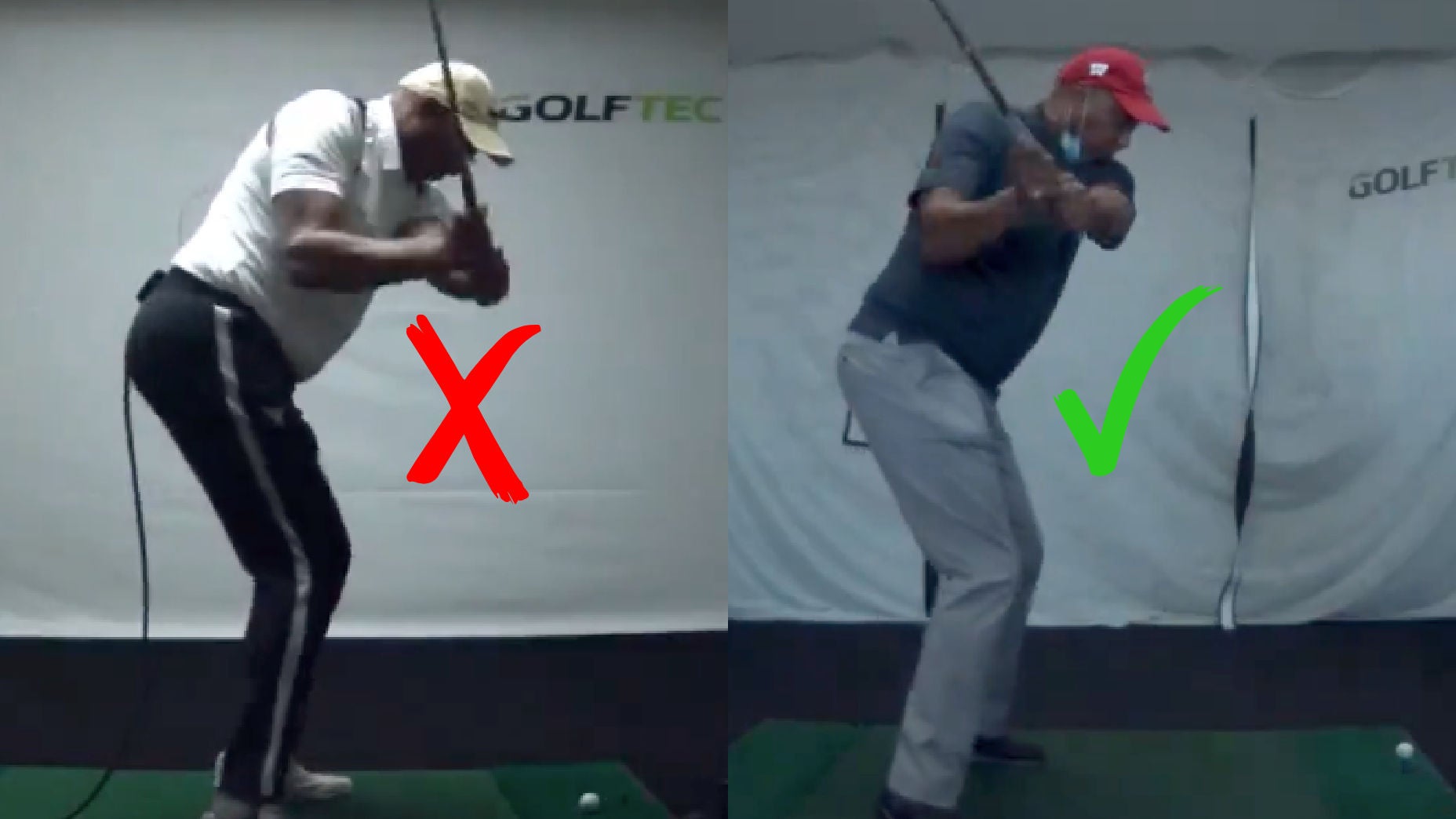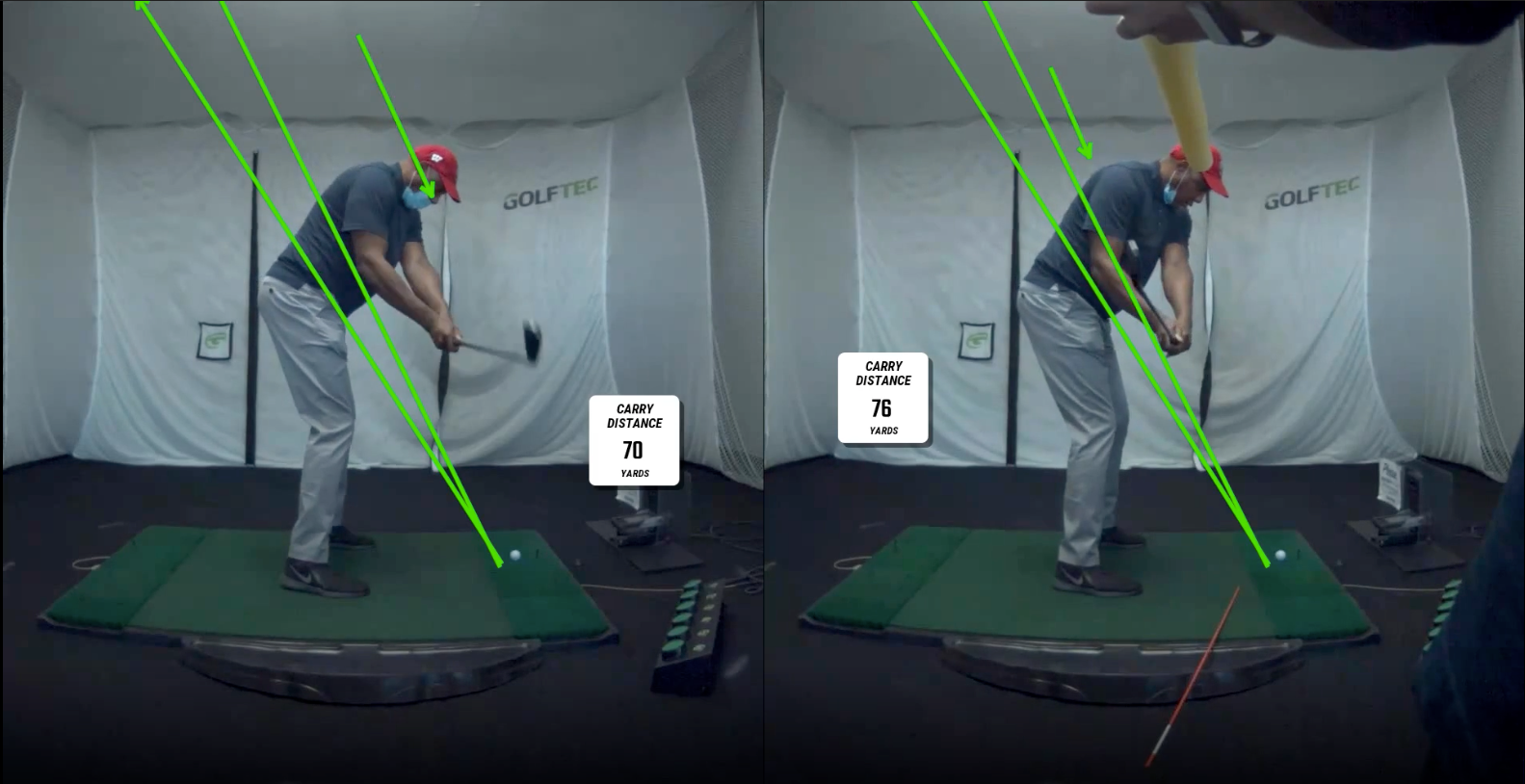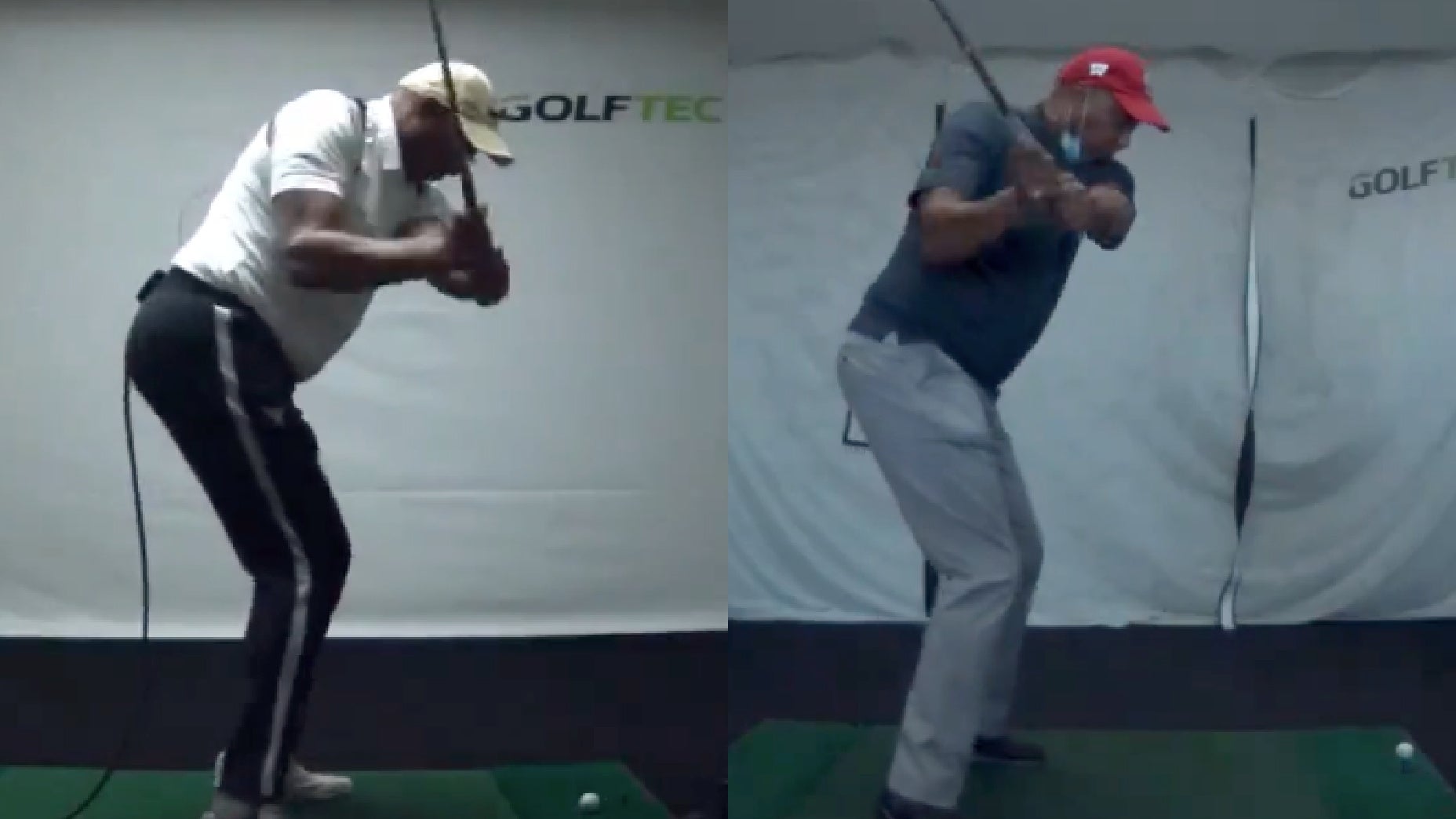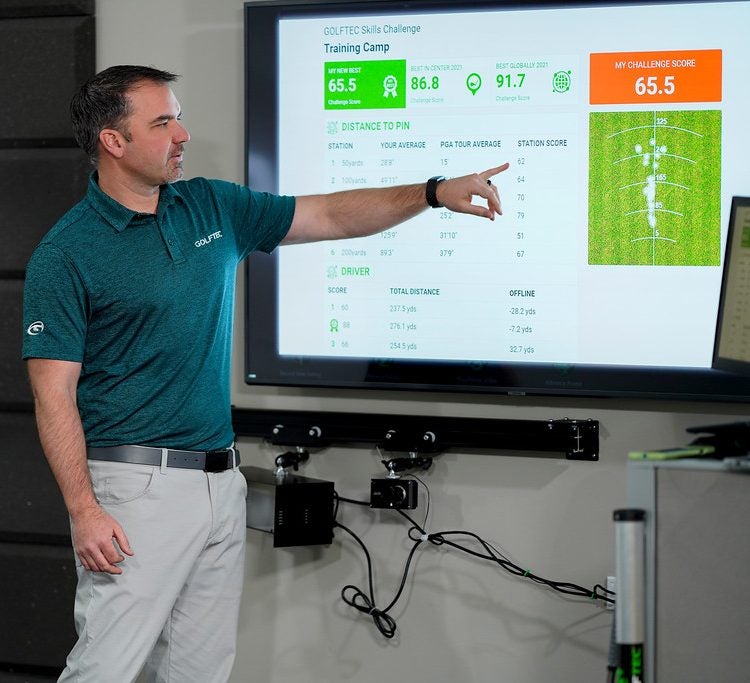How this golfer fixed his massive ‘over-the-top’ move and solved his slice

With some hard work and good instruction, Larry fixed his slice.
GOLFTEC
For the majority of golfers, it’s the cause of your slice. The cause of your stress! It’s the reason why your scores continue to suffer, and worse yet, it’s a move that golfers — by way of them being humans — are naturally predisposed to making.
Coming over the top. It’s the most common flaw in the golf swing, and when Larry Jones walked into the Orlando Park GOLFTEC, that was exactly the problem which needed fixing in his own game. Larry wasn’t just coming over the top, though: He was coming really over the top.
“Larry’s swing direction was 20 degrees left of the target, from out-to-in,” GOLFTEC coach Ariel Jones says. A neutral path, for context, is zero degrees, and most golfers generally want to swing from in-to-out. “Larry didn’t realize his swing was like this, and didn’t know where to start changing his swing direction 25 degrees more in-to-out.”

1. Start with the setup
Larry’s extreme over-the-top move was causing him all sorts of trouble, mostly slices and general contact errors, like fat and thin shots. He was struggling to hit the ground in the right spot repeatedly, Jones says, and when they set about fixing it, they started with his setup. This is an important note for all golfers, because often, over-the-top swings are an effect. For Larry, the root cause was found in his setup: His body was turned too far to his left.
With some hard work and good instruction, Larry fixed his slice.
GOLFTEC
For the majority of golfers, it’s the cause of your slice. The cause of your stress! It’s the reason why your scores continue to suffer, and worse yet, it’s a move that golfers — by way of them being humans — are naturally predisposed to making.
Coming over the top. It’s the most common flaw in the golf swing, and when Larry Jones walked into the Orlando Park GOLFTEC, that was exactly the problem which needed fixing in his own game. Larry wasn’t just coming over the top, though: He was coming really over the top.
“Larry’s swing direction was 20 degrees left of the target, from out-to-in,” GOLFTEC coach Ariel Jones says. A neutral path, for context, is zero degrees, and most golfers generally want to swing from in-to-out. “Larry didn’t realize his swing was like this, and didn’t know where to start changing his swing direction 25 degrees more in-to-out.”

1. Start with the setup
Larry’s extreme over-the-top move was causing him all sorts of trouble, mostly slices and general contact errors, like fat and thin shots. He was struggling to hit the ground in the right spot repeatedly, Jones says, and when they set about fixing it, they started with his setup. This is an important note for all golfers, because often, over-the-top swings are an effect. For Larry, the root cause was found in his setup: His body was turned too far to his left.
“Setting up like a bunker shot isn’t very conducive to hitting straight shots,” Jones says. “We started with closing both his hip and shoulder turns at address.”
“Setting up like a bunker shot isn’t very conducive to hitting straight shots,” Jones says. “We started with closing both his hip and shoulder turns at address.”
This alone lessened Larry’s in to-out-swing path, but it wasn’t there yet.
2. Use a swing obstacle
Once his setup was in a better spot, Jones held a pool noodle in the spot where his club shouldn’t be. If Larry was to swing over-the-top, he’d hit the obstacle in his way; the only way he wouldn’t was to swing around the obstacle. You can replicate this drill by placing a similar obstacle (like a water bottle) outside and to the right of the golf ball, so by swinging around it, you’ll be coming from in-to-out.
He started with small, half-iron shots, but this drill got his club in a better spot on the downswing, which led to a jump in distance, and prevented him from swaying from side-to-side. That’s the beauty of a good drill: It can improve your swing without much thought.

And to book your own swing evaluation at a GOLFTEC near you, use the special GOLF.com offer by clicking the link below:
All of our market picks are independently selected and curated by the editorial team. If you buy a linked product, GOLF.COM may earn a fee. Pricing may vary.
Swing Evaluation for GOLF.com Readers
BOOK YOUR SWING EVALUATIONThere’s still work to be done, but the before-and-after pictures tell their own story. Larry’s club is coming in from a shallower position, and his contact has improved with all his club.

At first Larry was having contact issues and then path issues. We worked a lot on his body motion from swaying back and forth and then into getting better flexibility with having his swing get more comfortable with not moving as much.


No comments:
Post a Comment